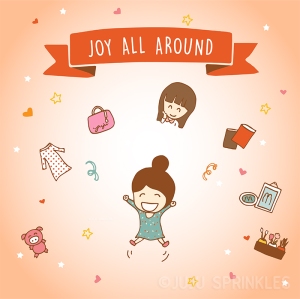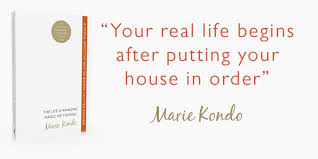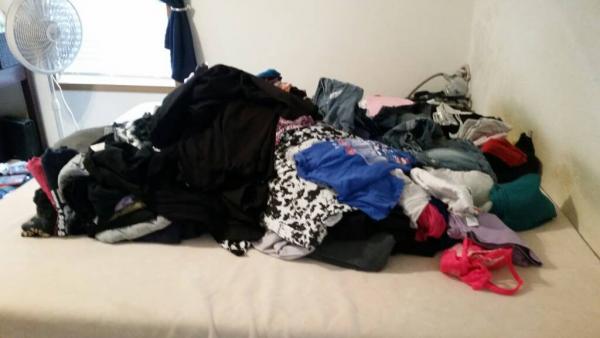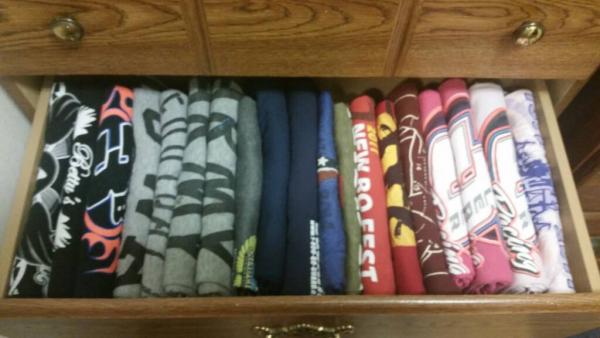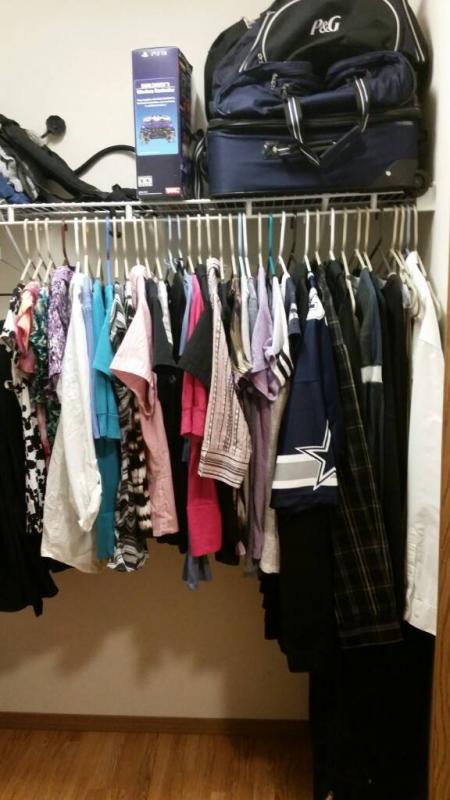We’re going to get a little bit off track today, but I think this topic plays in with minimalism, decluttering and simplifying life quite well – it almost facilitates it, if you ask me.
Growing up, talking about money was taboo. It was unacceptable to talk about income, debt, what you spent on something, etc. I believe to some degree, it still is, but I’m finding that some people are ok with it – and I think we should be – to some degree in certain contexts.
While I think it’s unacceptable to walk up to a friend and ask about salary for the sake of being nosy, I see nothing wrong with it being discussed in the course of conversation. I’m not here to get too personal about finances with you, but as our home CFO (chief financial officer), I would like to share some things I have learned over my short time as a responsible adult. And that requires a bit of financial history.
Our Very Expensive Lesson
My husband and I made some financial mistakes as young adults. We weren’t well educated on how credit worked. We knew that if you borrowed a loan, you had to pay it back, but we didn’t understand the cost of a loan or how to calculate it. We also didn’t realize just how shady credit card companies are.
My first experience with a credit card occurred in college. A well known credit card company with a V in its name was on campus trying to get students to sign up for their services. They enticed us with $20 phone cards. Since everyone I called was long distance, I signed up for the phone card. That was the biggest mistake of my life! Hands down.
I got approved for a $500 credit limit. To me, that meant free money. I started buying! I bought everything I wanted when I wanted it. I know longer carefully thought about my purchases. If my checking account was empty, I’d just put it on the card. It very quickly reached the max. Then I missed a payment. Then I missed a second payment. Then I was over the limit. Then my interest rate shot through the roof. I was unable to recover. Somehow, my mom learned of the credit card account and made me call and close it immediately. I spent the next however millions of months paying it off. Did this teach me anything? No. Not really.
I was a buyer. I wanted to buy everything. Money burned holes in my pockets. I made many money mistakes in college – including but not limited to using student loan funds to buy stuff, taking out more credit cards (I remember being enticed by one card’s “Cash Back Bonus Reward”. I ended up using a credit counseling service to get out of that mess) and overdrawing my checking account because I wasn’t being a very good steward of my money.
When I moved away from college and met my husband, my buying habits were then coupled with his buying habits. We ended up with many credit cards. We struggled month after month to make the payments on time. I eventually determined we needed a payment schedule. It was kind of like a budget, but not really. All it did was ensure our payments were made mostly on time. It was set up on a 4 week rotation, which meant occasionally, I’d end up making payments very early. In the world of credit cards, early payments are not helpful! This is when I got a true education on credit cards. Did you know that if you make your payment on time, but your next payment goes in before the end of the cycle date, it does not apply to the next month’s payment due? I didn’t. I ended up making two payments in one cycle, which resulted in our next payment being late. Our payment was late three months in a row before I realized what was happening. By then our interest rate was at the top and they refused to reduce it. My $250 monthly payment was only covering interest! Obviously, this system did not work as well as I thought it would…
Debt Payoff Methods
I broached the forbidden topic and talked with a friend about our debts. She recommended a website called Bank Rate that teaches how to eliminate debt while spending the least amount of money. It focuses on paying off the debts with the highest interest first, then working your way down the line to those with the lowest interest rate. We attempted this, but I don’t believe it was best for us. Our highest interest rate debts were also our largest balanced debts, so the wins were slow in arriving. It was not very motivating, however it was obviously going to save us thousands in interest debt over the years.
It wasn’t until we were getting yet another personal loan from the credit union to consolidate our credit card debts that we learned about Dave Ramsey. Our loan officer was amazing. She saw what we were doing and suggested we do something different. Dave has a podcast and radio show where he teaches listeners how to get out of debt fast. His approach is different. Instead of tackling the largest balance debts or highest interest debts first, he suggests tackling the smallest debts first. He says that the faster you pay things off, the more motivated you will be to continue.
I read two of his books: The Total Money Makeover and Financial Peace University. Our loan officer suggested that in addition to reading the books, we should take one of his classes. Our credit union sponsors them occasionally, but I’ve noticed there are many available through local churches. For various reasons, we never attended the class, but I would still like to. I think the classes would get both my husband and I not only on the same page, but also on the same sentence. We both want to get out of debt, but because he hasn’t read the books, he only has a slight understanding of how Dave’s program works.
It was through Dave’s program that I learned how to properly budget our money. I learned how to give each dollar a job and how to manage a $0 balance budget – meaning there was no “extra” money hanging out each month, just burning a hole in our pockets. (That does not mean we don’t have money to spend however we wish – we do. Dave will explain how that works if you choose to visit his site).
I created and maintained a spreadsheet that forecasted our payoff dates for every paycheck from now until total debt freedom. I’m what Dave would call a Nerd. I love numbers and I love forecasting. I do it each year. I frequently revisit our budget spreadsheet and payoff forecast and adjust as necessary. My husband is what Dave calls a Free Spirit. While it’s hard to pay off debt when both parties have different mindsets, it is possible (this is where Dave’s classes come in handy – he shows the Free Spirit how it works and helps them appreciate it).
Unfortunately, since one of us is a Nerd and one a Free Spirit and we haven’t taken the classes and only one of us has read the books, we ended up using our credit cards from time to time or would end up overdrawn because we didn’t mind our envelopes or our budget. A budget only works if you behave within its parameters – which you set. (Side note: a budget is not a punishment… it’s a tool that can do wonders for chiseling away at debt or building up a savings account). For this reason, Dave recommends using cash only: you can’t spend cash you don’t have.
But sometimes an all cash system just isn’t feasible. Sometimes we need to use our debit cards – they’re just so convenient! But I wanted to maintain the “envelope” system so we don’t overspend again, so I did some internet searching and talked to more friends about money. I learned of a program called You Need A Budget. YNAB, as it’s more affectionately called, has been quite the tool in our debt free quest. It’s like the virtual version of Dave’s envelope system. (YNAB also provides some incredible webinar classes and if you take the live version during your trial period, you may even score a free copy – but don’t worry – even the “not free” copy is affordable and very much worth every single cent).
Each pay day, I pop open the program (which is a standalone platform that gets installed on your computer and comes with free apps for mobile access) and “balance our budget”. I divide the money amongst the categories (or envelopes, if you will) and bring it all down to a zero balance – as Dave recommends. Because the money isn’t being physically removed from our checking account, if we end up overspending in one category (say we overspend on groceries by $50 or drive a bit more than usual and need more gas money) we don’t overdraw our checking account – we simply analyze our YNAB categories and move the money as we need to. This is where YNAB and Dave Ramsey clash – Dave believes that in order to truly make budgeting work, you can’t borrow money from one envelope to fund another – he calls it robbing Peter to pay Paul. It took me a long time to accept that it is ok to rob Peter to pay Paul, but it should only be done when absolutely necessary – don’t make a habit of it because you’ll just spend your life playing category catch-up – my least favorite game.
In the year and a half that I’ve been using YNAB, I’ve yet to get an overdraft fee. It’s been nothing short of amazing for us. We’re still working our way through YNAB’s 4 Rules to financial freedom, and we’re still on Dave’s Baby Step Number 1 (but also Baby Step 2), we’re making headway. We are now credit card debt free! All of our credit cards have been paid off and cancelled! (Read why Dave says maintaining a credit score is not necessary here).
We’ve been without a credit card for nearly a year now. And at first it was very overwhelming to not have that available source of money. The truth of the matter is that we didn’t have the money to begin with, so calling it a source is kind of an oxymoron. It took some time to get used to not having that means to buy things, sometimes things we truly needed. It took a serious adjustment to our thought process to overcome that need for a credit card. But I am so very glad they’re gone! At first we felt imprisoned by our lack of money, but now we feel a sense of hope! It is possible to live without credit cards! We’re no longer a slave to our past mistakes! We are no longer paying for things we bought nearly 10 years ago! We can breathe again!
This is not to say we’re debt free. We still have auto loans and other such debts. We’re working on them. And I can’t say we’ll ever be without a loan in the future. That certainly is my goal, but I’m not sure it’s going to happen. But we will forever be without credit card debt. Credit card debt is a devilish thing.
So there. We talked about money. Are you the family CFO? Do you have a system that works amazingly well for your family that wasn’t mentioned here? I’d love to hear from you! Share your favorite system with us in the comments section below.

